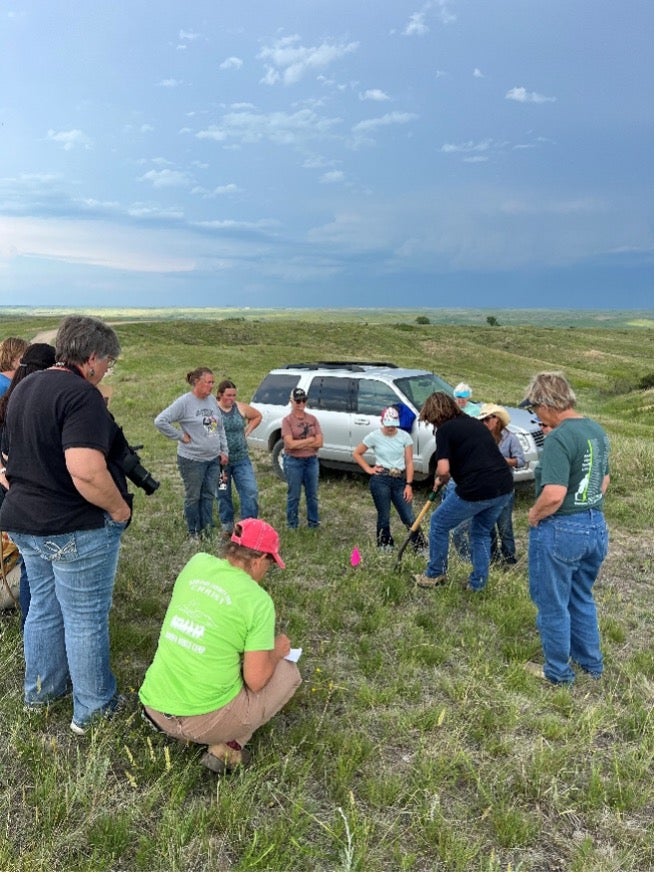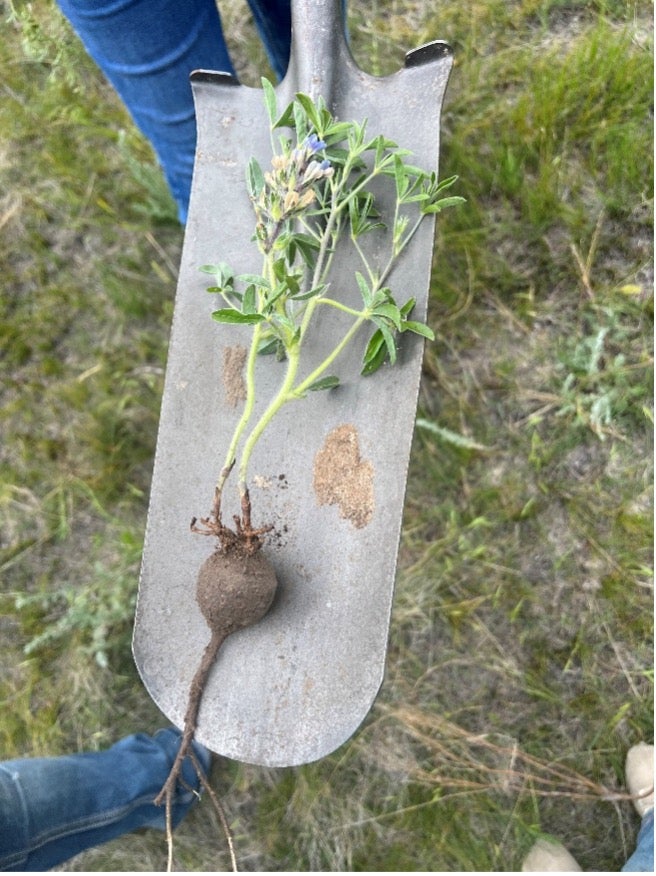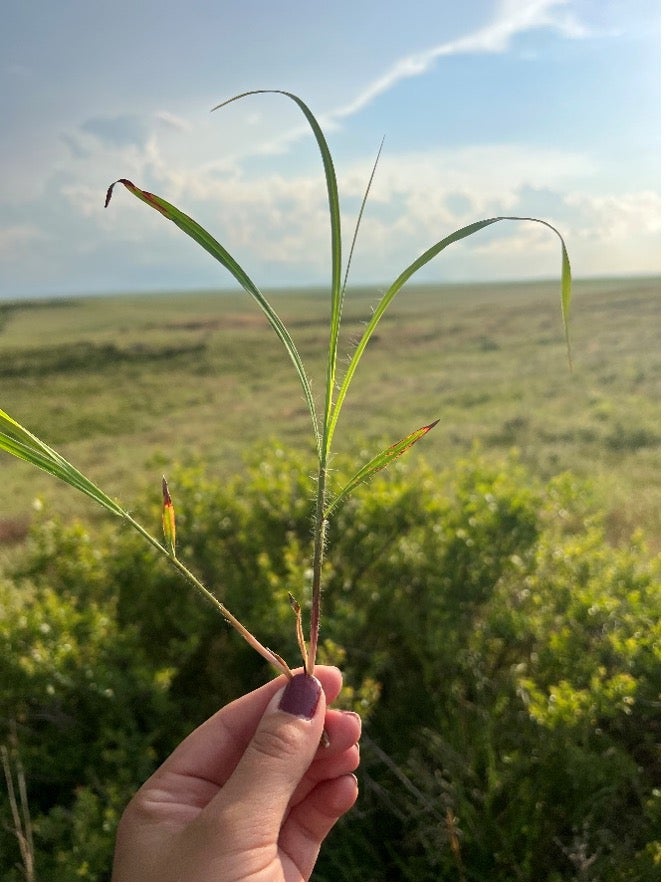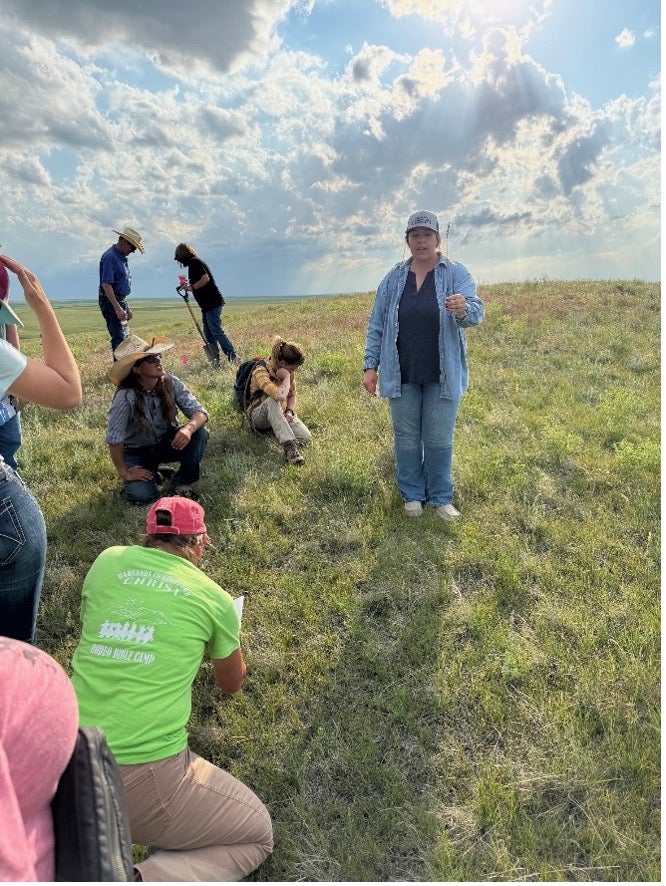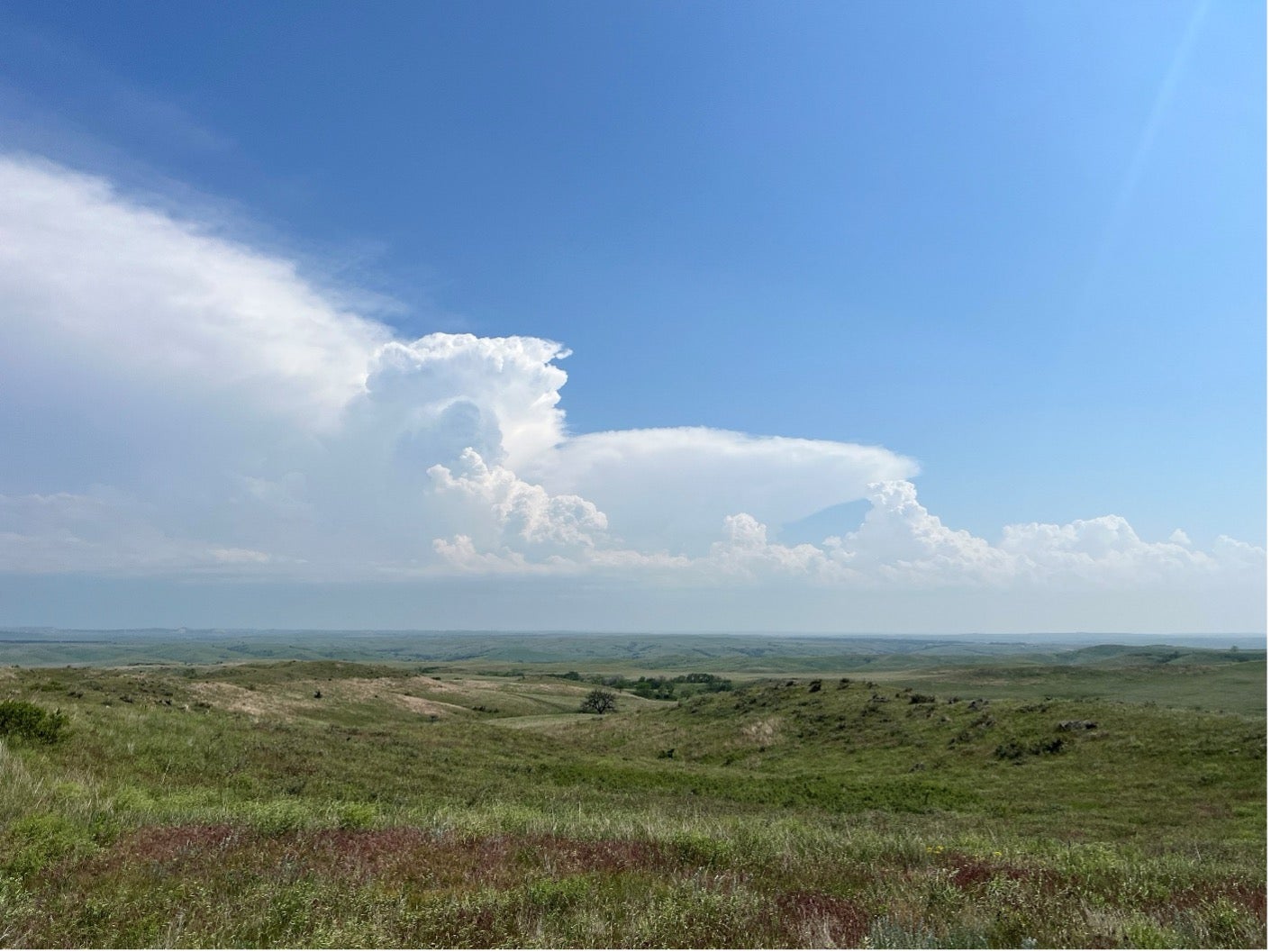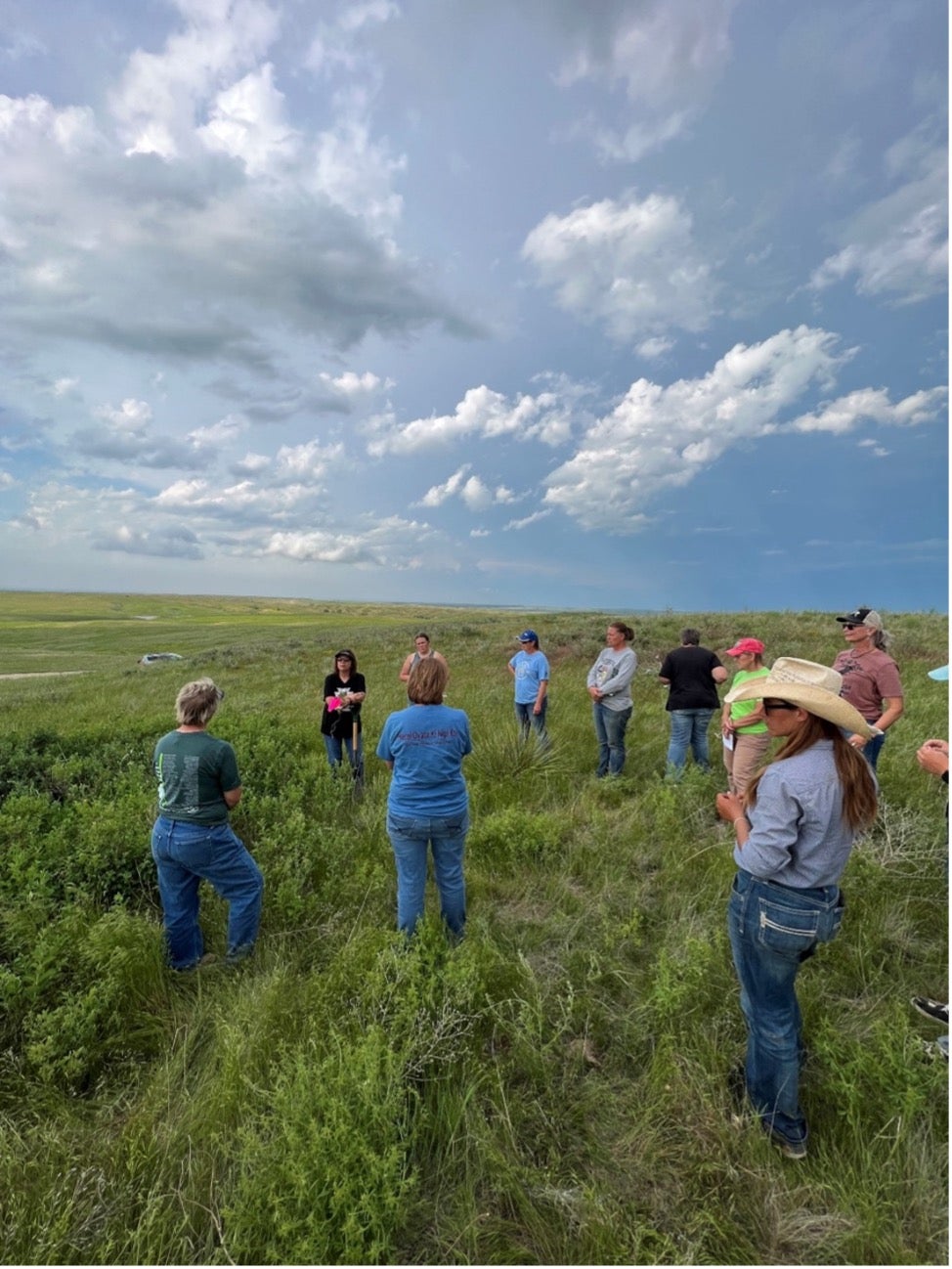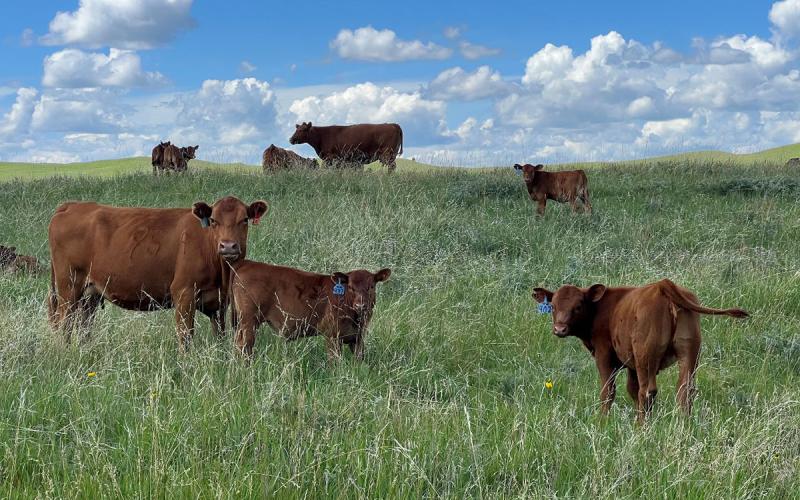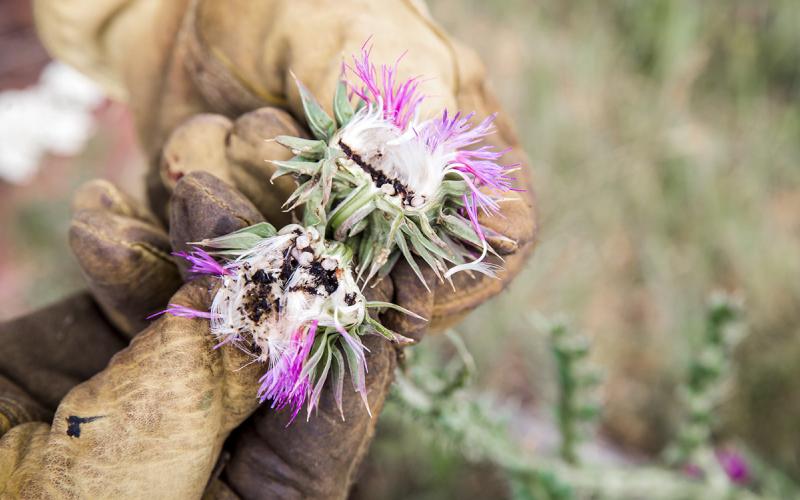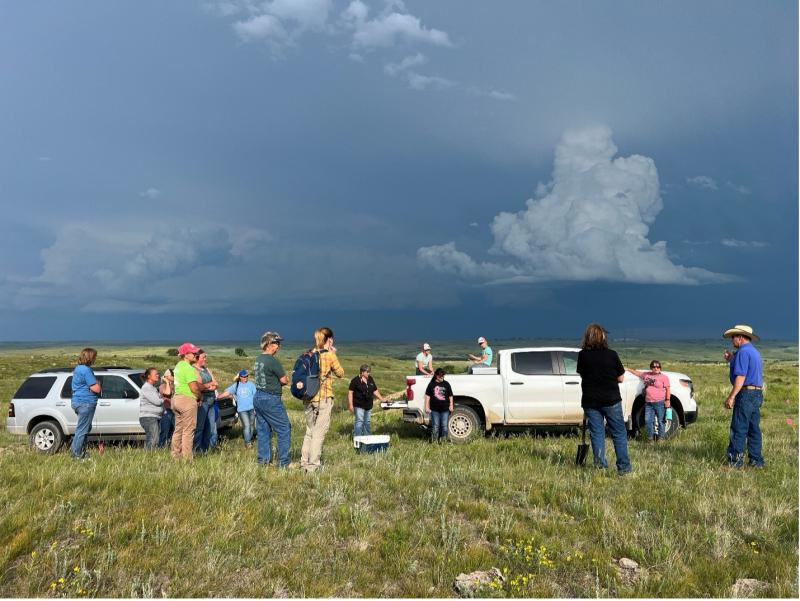
BROOKINGS – South Dakota State University Extension’s new “pasture chat” event provided a unique experience for women involved in agriculture in the White River region.
On June 12, 2025, 18 women from White River and surrounding areas gathered for an evening of connecting over their common interest – rangelands. Kaylee Wheeler, SDSU Extension Range Field Specialist, organized this event with Mary Scott, local NRCS Tribal Liaison; and Jewell Bork, with the South Central Resource Conservation and Development Council.
This pasture chat was designed as a casual way for women to gather, learn about rangelands and connect with each other without formal presentations. To start, the group visited the Strain Ranch north of White River where they stopped on a picturesque hillside and appreciated the natural beauty of the White River prairie. Ranch owners Bret and Gina Strain welcomed the group and told their story.
The group also got hands-on experience harvesting prairie turnips, also known as timpsila or Indian breadroot scurfpea. Above ground, this extra hairy plant has small blueish-purple flowers and a palmate leaf structure. Below ground a tap root reveals a large tuber, up to the size of an egg. This tuber is what can be harvested to eat.
Scott and Wheeler said the timpsila root was a traditional staple food group of Indigenous people of the prairie. They can be peeled and eaten fresh or dried and stored for later use. It is important to note that prairie turnip populations can easily be diminished by over-harvest by humans.
“Before you harvest, you want to make sure that the plant has some flowers that have gone to seed already,” said Scott. “It’s also important to remember that when you dig up the turnip, you are killing that plant. Always make sure that you put the seed head down in the hole that you dug so it can grow a new plant and never take more plants than you need.”
The hillside was filled with a variety of plant species, so Scott and Wheeler then led the group through a hands-on lesson in plant identification. Each plant can be identified through its unique characteristics, whether it’s the leaf arrangement, color or hairs that exist on leaves or stems.
In addition to basic identification of plant species, Wheeler and Scott spent time discussing any additional values of each plant – whether it is ideal for livestock grazing, pollinator and wildlife habitat, cultural practices, edible or useful for medicinal purposes.
“I think a lot of times our flowering plants can go unappreciated when people mistake them for weeds,” said Wheeler. “In truth, most plants are there for a purpose. It’s our job as land managers to figure out what that is. Having a good balance of native forbs and shrubs in your pasture can boost forage production, give livestock a higher quality diet, and contribute to many other systematic benefits such as pollinators, wildlife, soil health, and more.”
For more information on upcoming pasture chats or more SDSU Extension Women on the Range programming, contact Krista Ehlert, assistant professor and SDSU Extension Range Specialist; or Kaylee Wheeler, SDSU Extension Range Field Specialist.
